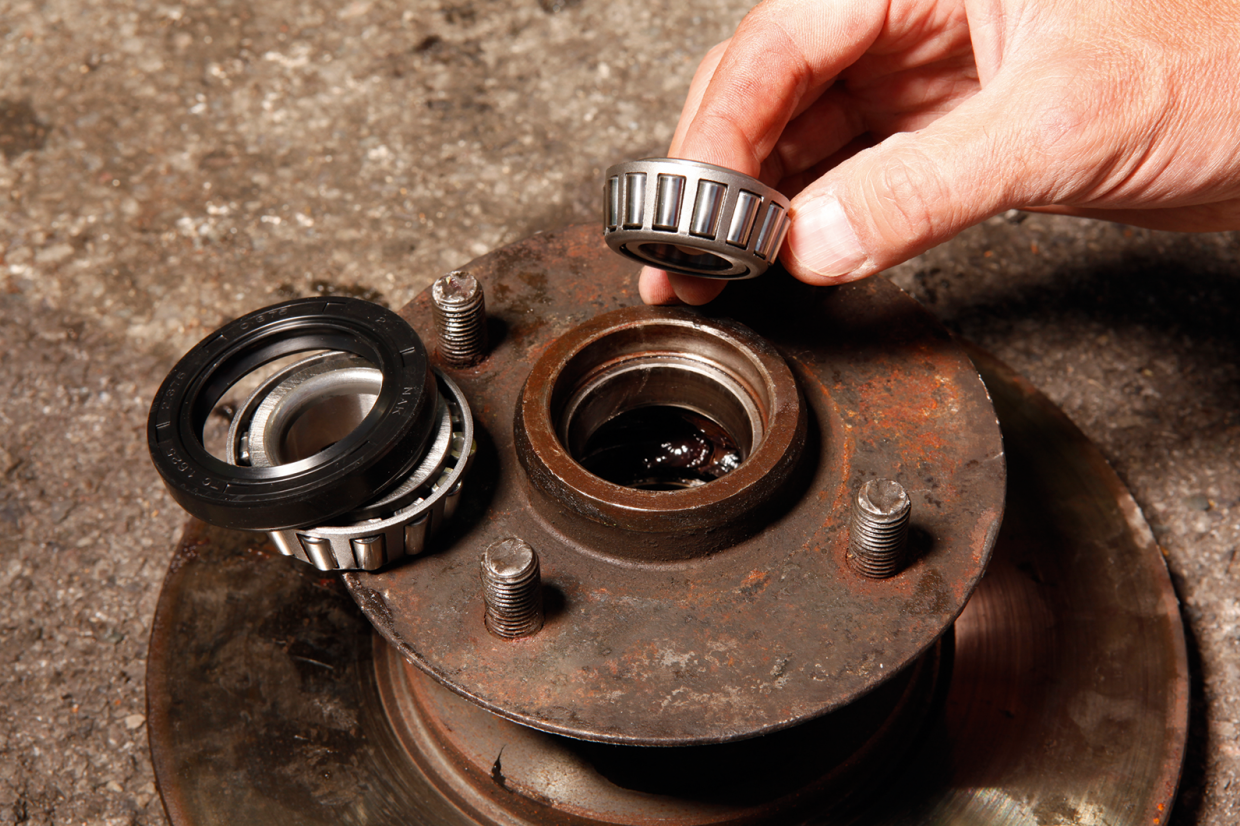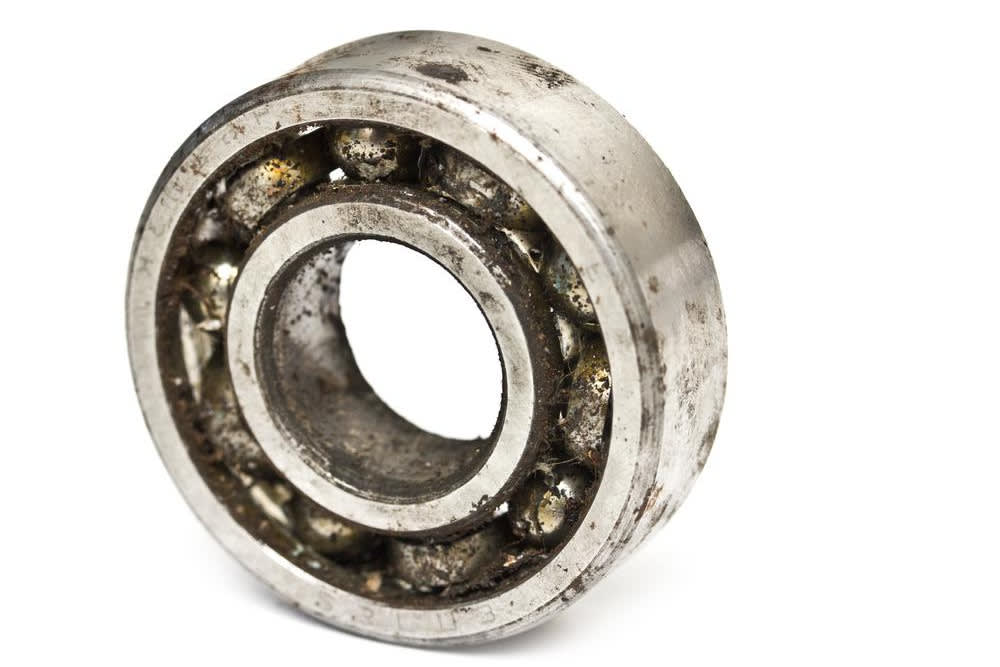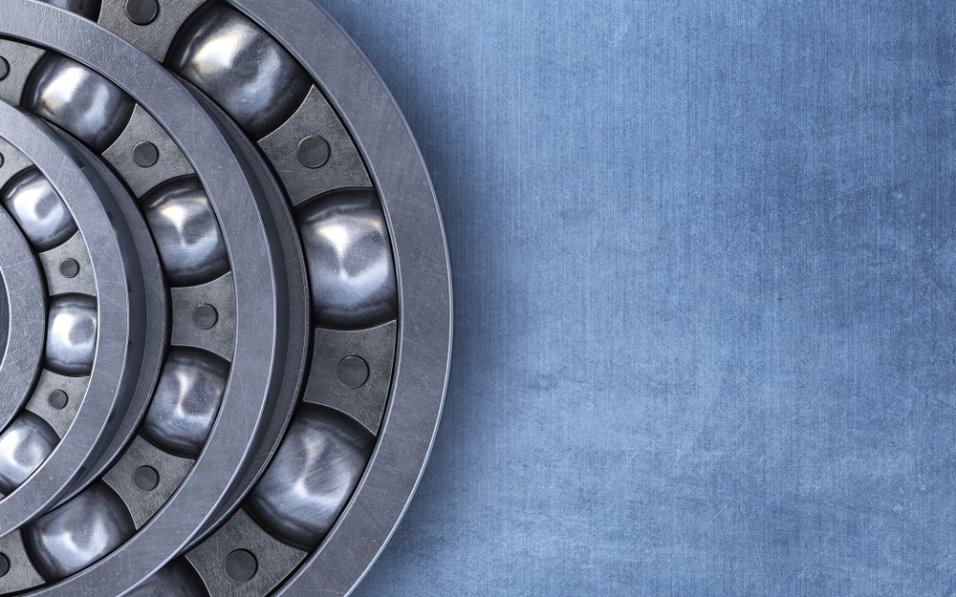The car dent removal and car paint job experts at our express car body repair centre have explained everything that you need to know about wheel bearings…
Where Are Wheel Bearings Located?
Wheel bearings form a crucial component of the wheel assembly connecting the wheel and axle. There are two different types of bearings (ball bearings or roller bearings), which are held together inside a waterproof, grease-filled, sealed metal ring, which is called a race. These bearings ride on a metal axle shaft that fits perfectly inside the wheel hub at the centre of the wheel. Some commercial vehicles such as trucks have their wheel bearings housed inside the brake disc rotor. The hub assembly is located in between the drive axle and braking components (brake calliper, and brake discs or drums). It incorporates the hub, ABS wheel speed sensor, wheel bearings, as well as the mounting flange. The wheel is held onto the bolts of the wheel hub assembly, on the side of the brake disc. On the drive axle side, the hub assembly is mounted to the steering knuckle as a press-in or as a bolt-on assembly. Most modern vehicles have sealed wheel bearing hub assemblies in order to further reduce rotating friction. Each wheel has its own set of wheel bearings to help the wheel rotate with as minimal friction as possible. The wheel bearings must be tightly packed and able to support the entirety of the weight of a vehicle. Wheel bearings are critical parts of a vehicle’s suspension, steering, and braking systems.

Types of Wheel Bearings: Ball Bearings vs. Roller Bearings
Ball bearings and roller bearings are the two main categories of anti-friction bearings. They have a lot in common, but there are also some important distinctions between them. Both ball bearings and roller bearings are made up of rolling elements and a separator that spaces the rolling elements apart evenly. The separator may also be referred to as a retainer or cage, but no matter the name given to it, it performs the same function. Both types of bearings have an inner ring, also called an inner race or cone, and an outer ring, also recognised as an outer race or cup. Where ball bearings differ from roller bearings is their roller element. As implied by their name, ball bearings use balls as rolling elements whereas roller bearings use a cylindrical, barrel, tapered, or needle-shaped element. Both ball bearings and roller bearings accomplish the same objective, which is to reduce the friction of a rotating mass. But ball bearings are used in applications where they are subject to higher speeds, whereas roller bearings perform better under heavier loads as well as impact loading. When too much pressure is placed on a ball bearing it is at risk of deforming, whereas the cylindrical design of roller bearings allows them to distribute weight over a larger surface.
How Do Wheel Bearings Break?
As a general rule, wheel bearing failure can occur from general wear and tear throughout a vehicle’s life time. In vintage cars, wheel bearings are serviced regularly with vehicle grease and a replacement seal, so when maintenance is foregone, failure will occur. But in modern vehicles, the wheel bearings are sealed permanently and therefore are not serviced. They are replaced only when their failure has been discovered. However, this does not guarantee that a wheel bearing will not ever fail. There are many reasons for a wheel bearing failure which are not limited to overloading, collision impacts, or extended mileage.

How Do You Know When Wheel Bearings Go Bad?
When the vehicle is in motion, you may hear a growling noise which coincides with the rotation of the tyres. In addition to this, you may also feel a vibration in the steering in the case of the front and in the vehicle seat or floor in the case of the rear. That is what commonly alerts the driver to a wheel bearing issue. When steering and changing lanes on the motorway, sometimes a change in growling pitch and vibration might be noticed and will alert the driver to a bearing issue as well. In severe cases, a low brake pedal will be due to an issue with the wheel bearings. The most common sign of a bad wheel bearing is a grinding noise that changes in conjunction with the speed of your vehicle. It can be misleading if you diagnose a bad wheel bearing based on noise alone as a sticking calliper and worn diff gears can be easily confused with wheel bearing noise. In order to check if your wheel bearings are bad, you’ll need access to a lift. Firstly, raise the vehicle off the ground, then grab the tyre with your hands on the 9 o’clock and 3 o’clock positions. Rock the wheel back and forth in order to feel if there is any play or looseness. Next, place your hands on the 12 o’clock and 6 o’clock positions and repeat the test. You should be aware that, on older vehicles with serviceable wheel bearings, a small amount of play is normal. Different makes of vehicles will have differing tolerances (maximum amount of acceptable play). For an accurate reading, sometimes a dial indicator can be used in order to measure the amount of play in the wheel bearings. If a wheel bearing is still suspected to be bad but is not showing signs of excess play, the wheel, brake pads, brake callipers, brake discs and bearing assembly will have to be removed in order to perform a visual inspection on the wheel bearing. A bad wheel bearing will often have small metal shavings present in the grease around the wheel bearing – an indication that the bearings are starting to come apart and are therefore in need of replacement.

Use Jenkins & Pain, Award-Winning Accident Repair Centre
There you have it, if you do find yourself with damage to your beloved paintwork, plasti dip or steering alignment and need a dent repair, van body repair or courtesy car you can count on us to complete all jobs using industry-standard processes. We offer free quotes and with our exclusive repair service, we are sure you will be happy with the results. Contact our Vehicle Body Shop today. Jenkins & Pain are an accident repair centre based in Dover, Kent. We are proud to call ourselves an award-winning accident repair centre. Check out our guide on how to look after your alloys!
Ready to Visit Our Vehicle Body Shop?
We understand how costly and inconvenient it is for a vehicle to be off the road and therefore we use processes that ensure your vehicle is repaired quickly and efficiently. So whether you need minor scratch repairs, major body repair, or alloy wheel restoration, our van body shop and car body shop can guarantee a high-quality service. We also repair light commercial vehicles and motorhomes. Contact us today for a paint repair at our Car Body Shop!


